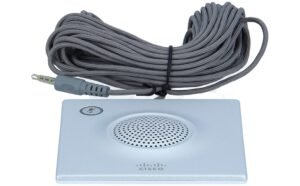In our fast-paced world, where stress often feels like a constant companion and tension can build up in the most unexpected places, finding relief is more important than ever. Enter deep tissue massage—the ultimate antidote for body and mind! This powerful therapeutic technique delves beneath the surface to release tight muscles, alleviate chronic pain, and promote an overall sense of well-being. Whether you’re an experienced massage therapist looking to refine your skills or a curious newcomer eager to explore the benefits of this ancient practice, you’ve come to the right place. Join us as we embark on a journey through the art of a deep tissue massage—from understanding its principles and techniques to discovering how it can transform your approach to self-care. Get ready to unlock the healing power within your hands!
Introduction to Deep Tissue Massage
Imagine a world where tension melts away, and your body feels light as air. Deep tissue massage offers that very escape—a therapeutic journey into the depths of muscle relaxation and pain relief. This technique goes beyond surface-level pampering; it targets underlying issues that contribute to discomfort and stress. Whether you’re an athlete recovering from intense training or someone simply seeking solace from daily life’s demands, deep tissue massage has something valuable for everyone.
In this guide, we’ll explore the incredible benefits of this powerful therapy, uncover essential techniques used by skilled practitioners, and equip you with tips to enhance your experience. Get ready to discover how the healing touch can transform not just your muscles but also your overall well-being!
Benefits of Deep Tissue Massage
- Deep tissue massage offers a myriad of benefits that extend far beyond mere relaxation. It targets the deeper layers of muscle and connective tissue, helping to alleviate chronic pain and tension.
- This type of massage can improve circulation, promoting better blood flow throughout the body. Enhanced circulation not only aids in recovery but also boosts overall vitality.
- It’s known for reducing stress and anxiety. The intense pressure often releases endorphins, which help elevate mood and foster a sense of well-being.
- Athletes frequently turn to deep tissue techniques as it aids in injury prevention by addressing tight muscles before they lead to issues.
- Additionally, this form of therapy can improve flexibility. By loosening tight muscles, it allows for greater range of motion during physical activities.
Understanding the Muscles and Fascia
The human body is a complex network of muscles and fascia, working together to facilitate movement. Muscles are the engines that power our movements. They contract and relax to create motion.
Fascia, on the other hand, is a web-like connective tissue enveloping muscles and organs. It provides support and structure while allowing for flexibility. This intricate system can hold tension from stress or injury over time. Understanding how these components interact helps us appreciate the benefits of deep tissue massage. By targeting both muscles and fascia, therapists can release built-up tension effectively.
Diving deeper into this relationship reveals why certain areas may feel sore or tight after physical activity. Addressing not just the muscle but also its surrounding fascia encourages healing from within, promoting overall well-being in your physical journey.
Techniques Used in Deep Tissue Massage
Deep tissue massage employs several specialized techniques to target tension and pain in the muscle layers. Each technique focuses on different aspects of muscle relief.
Myofascial release is one method that works on the fascia, the connective tissue surrounding muscles. By applying gentle pressure, therapists can help release restrictions and improve overall flexibility. Trigger point therapy hones in on specific knots or tight areas within a muscle. Applying direct pressure here alleviates discomfort and promotes blood flow, offering significant relief.
Friction involves deep strokes against the grain of muscles to break down adhesions. This technique enhances circulation and reduces inflammation effectively.
Stripping uses long, gliding strokes along the length of a muscle for deeper relaxation. It helps elongate tight tissues while providing soothing sensations. Compression applies steady pressure directly onto an area. This invigorating method warms up muscles and prepares them for further work, enhancing effectiveness throughout the session.
Myofascial Release
Myofascial release is a technique that focuses on relieving tension in the fascia. This connective tissue surrounds muscles, bones, and organs throughout the body. When this fascia becomes tight or restricted, it can lead to pain and discomfort.
The method involves applying gentle pressure into specific areas of restriction. By doing so, therapists help restore movement and flexibility. It’s not just about muscle knots; it’s about releasing entire networks of tension. One key aspect is that myofascial release encourages blood flow. Improved circulation promotes healing by delivering essential nutrients while flushing out toxins.
Clients often report a deep sense of relaxation during sessions. The slow, deliberate movements take their time to unlock layers of tension that might have built up over years. It’s both an art and a science aimed at fostering overall well-being through mindful touch.
Trigger Point Therapy
- Trigger Point Therapy focuses on specific tight areas within muscle tissue. These are known as trigger points, often causing pain in seemingly unrelated parts of the body.
- During a session, therapists apply direct pressure to these points. This helps release tension and alleviate discomfort. The goal is to break up knots that form due to stress or injury.
- Clients may experience tenderness during treatment, but relief usually follows soon after. It’s essential for practitioners to communicate with clients about their comfort levels.
- Incorporating breathing techniques can enhance the effectiveness of this therapy. Deep breaths help relax muscles and improve circulation throughout the body.
- Trigger Point Therapy isn’t just about immediate relief; it also aids in long-term healing by improving overall mobility and function. Regular sessions may reduce recurring pain patterns over time, allowing you to move freely again without limitations.
Friction
Friction is a vital technique in deep tissue massage that focuses on specific areas of tension. This method involves applying slow, firm pressure across the muscle fibers. It helps to increase blood circulation and break down adhesions.
When a therapist uses friction, they often work with their fingers or thumbs to create deliberate resistance against the skin. This action can feel intense but is crucial for accessing deeper layers of muscle tissue. The goal is not just to alleviate pain but also to enhance mobility and flexibility. Clients may notice an immediate release of tightness after treatment.
Incorporating friction into a session can help target stubborn knots that standard massages might overlook. It’s about precision and patience, ensuring each stroke aids in healing rather than causing discomfort.
Stripping
Stripping is a powerful technique in deep tissue massage that focuses on long strokes along the muscle fibers. It’s often used to address large muscle groups, like the back and thighs, where tension can build up.
The therapist applies firm pressure while gliding their hands along the length of the muscles. This motion helps release knots and improve circulation. Unlike other techniques that might target specific points or areas, stripping works to elongate and relax entire sections of muscle.
Clients typically find it both soothing and invigorating as they feel layers of tightness melt away. The sensation can range from gentle stretching to more intense pressure depending on individual comfort levels.
As with any massage technique, communication between client and therapist is essential for maximizing benefits and ensuring a positive experience throughout the session.
Compression
Compression is a powerful technique used in deep tissue massage that focuses on applying sustained pressure to specific areas of the body. This method targets muscle tension and promotes relaxation.
Beginning with gradual pressure, practitioners can help release tight spots in the muscles. The gentle yet firm approach allows for deeper access without causing excessive discomfort. As compression is applied, blood flow increases, delivering oxygen and nutrients to fatigued tissues. This enhances recovery from physical exertion and encourages healing.
Additionally, this technique fosters a sense of grounding and security for many clients. It invites a connection between mind and body while alleviating stress.
Regular sessions incorporating compression may lead to improved flexibility over time as restrictions within the soft tissues are addressed systematically. Embracing this technique can unlock new levels of comfort and well-being in your massage experience.
Preparing for a Deep Tissue Massage Session
Preparing for a deep tissue massage can enhance your experience significantly. Start by communicating with your therapist about any specific areas of concern or tension. This helps tailor the session to your needs.
Hydrate well before arriving. Drinking water keeps your muscles supple and more responsive to treatment. Aim for at least eight ounces an hour prior to your appointment. Comfortably in loose clothing so you can easily slip into relaxation mode. While you may undress partially during the massage, wearing cozy attire is a great way to feel grounded.
Arrive early to allow time for settling in. Use this moment to breathe deeply and calm your mind, setting a positive tone for the session ahead.
Lastly, avoid heavy meals right before the appointment. You want comfort—not discomfort—while lying on the table as those skilled hands work their magic.
Aftercare and Self-Care Tips
After a deep tissue massage, your body deserves some extra care. Hydration is key. Drink plenty of water to help flush out toxins released during the session.
Gentle stretching can also be beneficial. It keeps muscles flexible and enhances blood flow. A few simple yoga poses or light stretches can do wonders. Resting is just as important. Allow yourself time to unwind and process the experience. Listen to soothing music or take a warm bath to relax further.
Consider incorporating heat therapy afterward too. A heating pad on sore areas can relieve tension and promote comfort. Finally, pay attention to how your body feels over the next few days. If soreness lingers, gentle movement will help ease it away rather than complete inactivity!
Common Misconceptions about Deep Tissue Massage
Many people believe that deep tissue massage is synonymous with pain. While it’s true that this technique applies firm pressure, discomfort doesn’t have to be a part of the experience. Skilled therapists know how to navigate tension without causing unnecessary hurt.
Another misconception is that deep tissue massage is only for athletes or those with chronic pain. In reality, anyone can benefit from these techniques. Stress relief and relaxation are universal needs.
Some think that more pressure equals better results. This isn’t always accurate; effective communication between the client and therapist ensures an optimal experience tailored to individual comfort levels.
Lastly, many assume one session will fix everything. Muscle recovery takes time, and regular sessions often yield the best outcomes for lasting relief and improved mobility.














